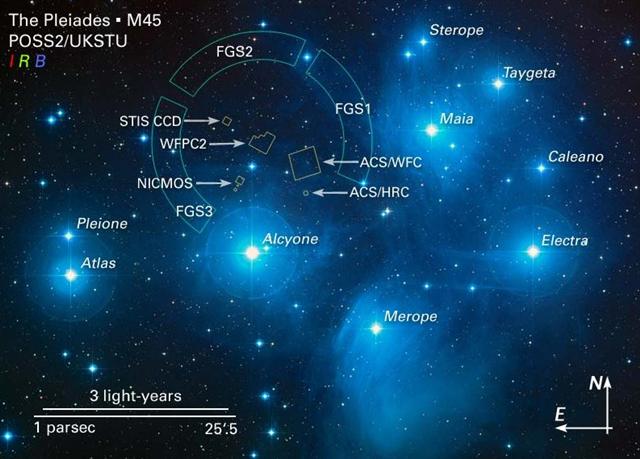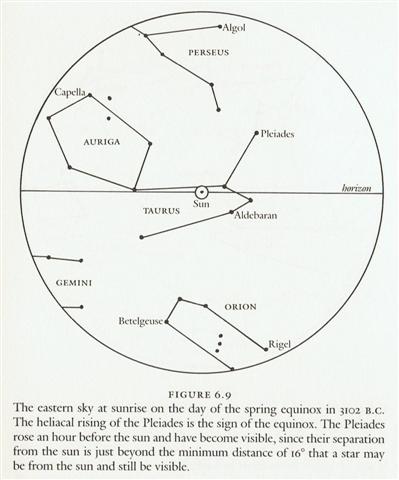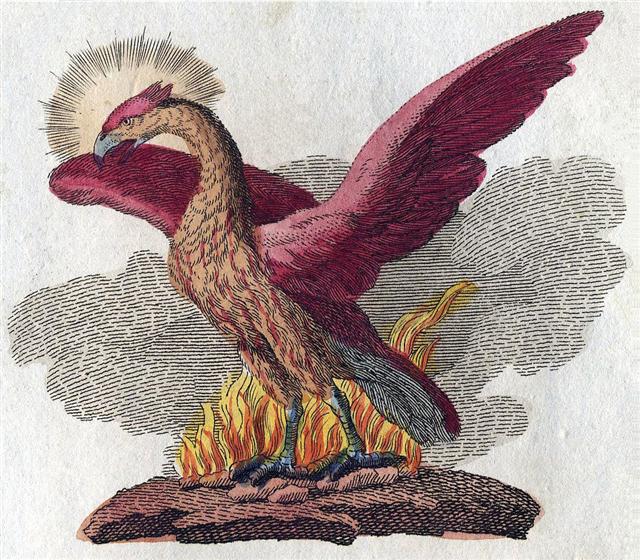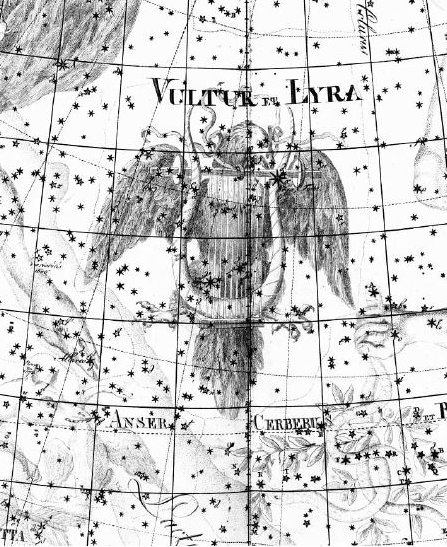503. December 30 (364) + May 16 (136) = 500 (May 15). ... Time flows and not until its first measure has been completed in full can there be a 1 notched into the wood ...  At the time of the Bull they would have waited late at night for the return to visibility of the Pleiades at the horizon in the east, which required a minimum of 16º or about 16 right ascension days after the Sun had been there. My structure with a 64 right ascension day difference between the time of rongorongo and the time of the Bull can therefore be understood as a time distance of 64 + 16 = 80 such days, in which case Alcyone would have returned to visibility in day 136 (May 16) - 80 = 56:
.... A sidelight falls upon the notions connected with the stag by Horapollo's statement concerning the Egyptian writing of 'A long space of time: A Stag's horns grow out each year. A picture of them means a long space of time.' Chairemon (hieroglyph no. 15, quoted by Tzetzes) made it shorter: 'eniautos: elaphos' ... number 16: 'eniautos: phoinix', i.e., a different span of time, the much-discussed 'Phoenix-period' (ca. 500 years) ...
... A man had a daughter who possessed a wonderful bow and arrow, with which she was able to bring down everything she wanted. But she was lazy and was constantly sleeping. At this her father was angry and said: 'Do not be always sleeping, but take thy bow and shoot at the navel of the ocean, so that we may get fire.' The navel of the ocean was a vast whirlpool in which sticks for making fire by friction were drifting about. At that time men were still without fire. Now the maiden seized her bow, shot into the navel of the ocean, and the material for fire-rubbing sprang ashore. Then the old man was glad. He kindled a large fire, and as he wanted to keep it to himself, he built a house with a door which snapped up and down like jaws and killed everybody that wanted to get in. But the people knew that he was in possession of fire, and the stag determined to steal it for them. He took resinous wood, split it and stuck the splinters in his hair. Then he lashed two boats together, covered them with planks, danced and sang on them, and so he came to the old man's house. He sang: 'O, I go and will fetch the fire.' The old man's daughter heard him singing, and said to her father: 'O, let the stranger come into the house; he sings and dances so beautifully.' The stag landed and drew near the door, singing and dancing, and at the same time sprang to the door and made as if he wanted to enter the house. Then the door snapped to, without however touching him. But while it was again opening, he sprang quickly into the house. Here he seated himself at the fire, as if he wanted to dry himself, and continued singing. At the same time he let his head bend forward over the fire, so that he became quite sooty, and at last the splinters in his hair took fire. Then he sprang out, ran off and brought the fire to the people ...
 The Stag stole the fire and brought it down from the sky to the earth. Between him and Anunitum a Rainbow was formed. ... Though Andromeda has its roots most firmly in the Greek tradition, a female figure in Andromeda's place appeared in Babylonian astronomy. The stars that make up Pisces and the middle portion of modern Andromeda formed a constellation representing a fertility goddess, sometimes named as Anunitum or the Lady of the Heavens ... ... In South America the rainbow has a double meaning. On the one hand, as elsewhere, it announces the end of rain; on the other hand, it is considered to be responsible for diseases and various natural disasters. In its first capacity the rainbow effects a disjunction between the sky and the earth which previously were joined through the medium of rain. In the second capacity it replaces the normal beneficient conjunction by an abnormal, maleficient one - the one it brings about itself between sky and earth by taking the place of water ... At the time of rongorongo Atlas (and of course also Pleione and Alcyone) culminated at 21h in December 31 (365) we should remember:
Once upon a time this culmination of the Pleiades would have been at midnight (12 p.m = 0 a.m.) but since then the precession of the cardinal points of the Sun would have carried the time of culmination observation later in the year, and to compensate for this fact the time of observation in December 31 had been set (according to Allen) at 21h - which implied a precessional depth of around 3h / 24h * 365.25 = ca 46 right ascension days. 21h (*319.6) corresponds to February 3 (*320) = March 21 (*366) - *46. ... In astrology α [Andromedae, Sirrah] portended honor and riches to all born under its influence. It comes to the meridian - culminates - at nine o'clock in the evening of the 10th of November. All culminations mentioned in this work are for this hour ... However, the label Messier 45 (for the Pleiades) implies 45 such days ('notches', nights). 365 + 45 = 410 = February 14 (31 + 14 = 45). There are 45 (February 14) - 34 (February 3) = 11 days from the December solstice (355) to the beginning of January (366). February 14 can be expressed as 2-14: ... Once upon a time there was an old woman who owned a great potato field (mara) where she planted her potatoes in spring and harvested them in autumn. She was famous all around for her many varieties of wonderful potatoes, and she had enough of them to sell at the market place. She planted her potatoes 7 in a row, placing her foot in front of her as a measure from one potato to the next. Then she marked the place with a bean - which would also give nourishment to the surrounding potatoes. Next she changed variety and planted 7 more followed by another bean, and this was the pattern she followed until all her 214 varieties had been put down in their proper places. She had drawn a map which she followed and from where each sort of potato could be located at the proper time for its harvest ... ... The Hawaiian woman who was interviewed chuckled because the assassination of Captain Cook coincided with the day we have named All Hearts' Day - when in February 14 (2-14) the war-god Kuu returned to power ... And day 214 (August 2) = 182 + 32:
|
||||||||||||||||||||||||||||||||||||||||||||||||||||||||||||||||||||||||||||||||||||||||||||||||||||||||||||||||||||||||||||||||||||||||||||||||||||









